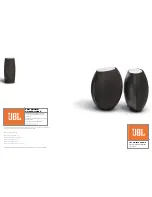
- 17 -
Glossary
AC INDICATOR:
Small green power on-off light between the center buttons on
the keypad. When lit, the system is running on primary power; when not lit,
the system is running off the backup battery.
ALARM:
Sound from keypad or other horn/siren indicates a burglar alarm, fire
alarm, or other condition you should be alerted to.
ARMED:
See ON/OFF.
AWAY:
A system setting that protects the premises while it is unoccupied. All
burglary sensors are active.
BURGLARY/FIRE:
The two major functions of a security system. Fire protection
is always on and cannot be turned off. The burglary sensors protect against
unauthorized entry into your premises. The burglary protection can be turned
on and off and programmed for special levels of access and notification.
BYPASS FEATURE:
The Bypass feature allows you to exclude a selected zone
or zones from the burglar alarm protection.
BYPASS BUTTON:
A button on the keypad used to activate the Bypass feature.
CENTRAL STATION:
The signal monitoring center contacted by your security
system over the telephone and/or other communication channels when alarms
are activated if your system is programmed to communicate alarms off site. The
central station will follow their procedures and your instructions for contacting
the proper authorities when a signal is received.
CHIME FEATURE:
An optional feature that causes the keypad to chime for one
second when selected doors are opened when the burglary protection is off or
disarmed. Once programmed by your installer, you can turn Chime on and off
with #6.
DISARMED:
See ON/OFF.
DURESS:
Duress is a system feature that you may have programmed into your
system. If someone forces you to turn your system off, entering the special
Duress user code turns the system off and sends a silent duress emergency
signal to the central station so personnel there can respond appropriately.
ENTRY DELAY:
The period of time allowed between opening a designated
entry/exit door and turning off the alarm system before the system will register
an alarm condition. This is determined at the time of installation. Your system
supports two entry times, allowing you to have a different length of time for
different doors.








































